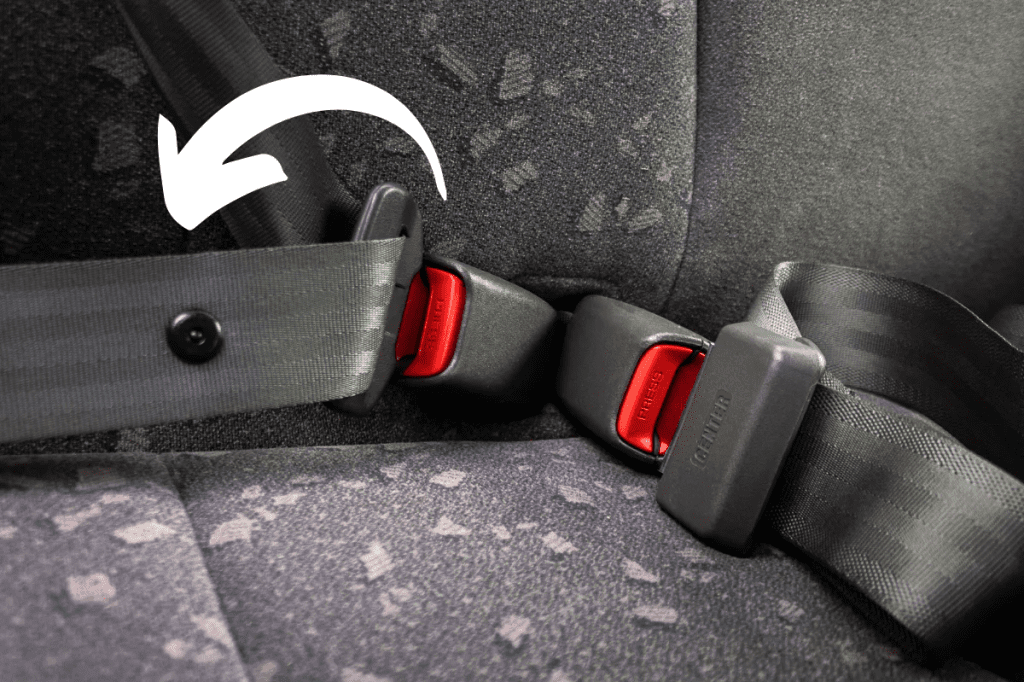The seat belt stop button, often called a seat belt stopper, may seem like a trivial part of your car’s safety system, but it holds surprising importance. This unassuming piece of plastic plays a vital role in ensuring both comfort and safety, making your driving experience smoother and safer. Positioned along the seat belt strap, it keeps the latch plate from sliding too far down, ensuring convenience for drivers and passengers alike.
Why the Stop Button Matters

Imagine getting into your car and reaching for your seat belt. You expect the latch plate to be right where you left it, ready to buckle in seconds. The stop button ensures this convenience by preventing the latch plate from sliding all the way down to the retractor.
Without this small button, fastening your seat belt could become a hassle. You’d need to fumble around to find the latch plate, adding unnecessary stress to your routine—especially when you’re in a rush or dealing with limited mobility. By keeping the latch plate easily accessible, the stop button simplifies a task we often take for granted.
Enhancing Proper Seat Belt Alignment
Correct alignment of the seat belt is crucial for its effectiveness. For optimal safety, the belt should rest snugly against your chest and collarbone and lie flat across your pelvis. When the stop button fails or is missing, the latch plate can slip out of position, making it harder to achieve this proper fit.
An ill-fitting seat belt not only diminishes its protective capability but might also lead to unsafe habits. Some individuals might neglect to use the seat belt correctly—or at all—if it feels like too much of a bother to adjust. The stop button ensures the belt stays in place, helping you maintain safe practices effortlessly.
What Happens If the Stop Button Breaks?
Over time, frequent use can cause the stop button to wear down or break entirely. The plastic might crack, loosen, or fall off, leaving the latch plate to slide freely. This might seem like a minor annoyance, but it can have serious implications.
A broken stop button often results in improper seat belt use, as drivers and passengers struggle to keep the latch plate in position. For older adults or children, this inconvenience can be particularly frustrating. It’s not just about comfort; it’s about safety. A compromised seat belt system can increase the likelihood of injury in an accident.
How to Replace a Broken Stop Button
Thankfully, fixing a broken stop button is a simple and affordable task you can do yourself. Replacement kits are widely available online, at auto parts stores, and even in the automotive sections of some big-box retailers. Here’s how you can replace your stop button:
- Find a Replacement Kit: Look for a kit compatible with your vehicle’s make and model. Generic options often work just as well and are typically inexpensive.
- Locate the Original Position: Pull the seat belt all the way out to identify where the stop button used to be. It’s usually placed a few inches above where the latch plate naturally rests.
- Install the New Button: Snap the two plastic halves of the replacement button around the belt at the correct position. Secure them firmly using pliers or a small hammer if necessary, but be careful not to damage the belt fabric.
- Test the Button: After installation, gently tug on the latch plate to ensure it doesn’t slide past the new stop button. A secure fit means your repair was successful.

This quick fix restores your seat belt’s functionality, improving both convenience and safety for you and your passengers.
The Role of the Stop Button in Vehicle Safety
Though small, the stop button is a critical part of your vehicle’s seat belt system. Modern seat belts are a complex assembly of components, including retractors, buckles, pretensioners, and webbing. Each element works together to protect you in an accident, and even the tiniest piece—like the stop button—contributes to this system’s effectiveness.
A missing or broken stop button might seem inconsequential compared to advanced safety features like airbags or electronic stability control. However, it directly influences how easily and consistently people use their seat belts. Encouraging proper use and alignment is key to minimizing injuries during sudden stops or collisions.
Comfort and Convenience for All Passengers

For families, ensuring seat belt accessibility is especially important. Children and older adults often find it difficult to reach for a latch plate that has slipped down to the retractor. By maintaining a functioning stop button, you make it easier for everyone in the car to buckle up correctly.
Comfort and ease-of-use directly impact seat belt compliance. When fastening a seat belt becomes second nature, passengers are more likely to wear it consistently—no matter the length of the journey.
Conclusion: Small But Essential
The seat belt stop button may be tiny, but it plays a significant role in your car’s safety and convenience. By keeping the latch plate accessible and the belt aligned, it ensures that buckling up remains a quick, hassle-free habit. If your stop button breaks, fixing it is easy and inexpensive, requiring only a few minutes of your time.
Investing in this small repair enhances your seat belt’s performance and reinforces safe driving habits. So, the next time you fasten your seat belt, take a moment to appreciate this little button—it’s a simple yet essential part of keeping you secure on the road.


